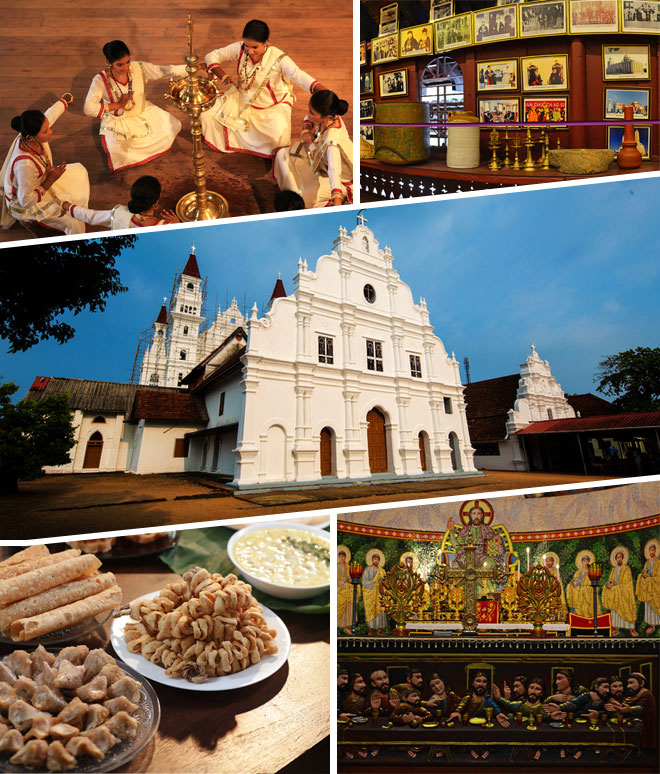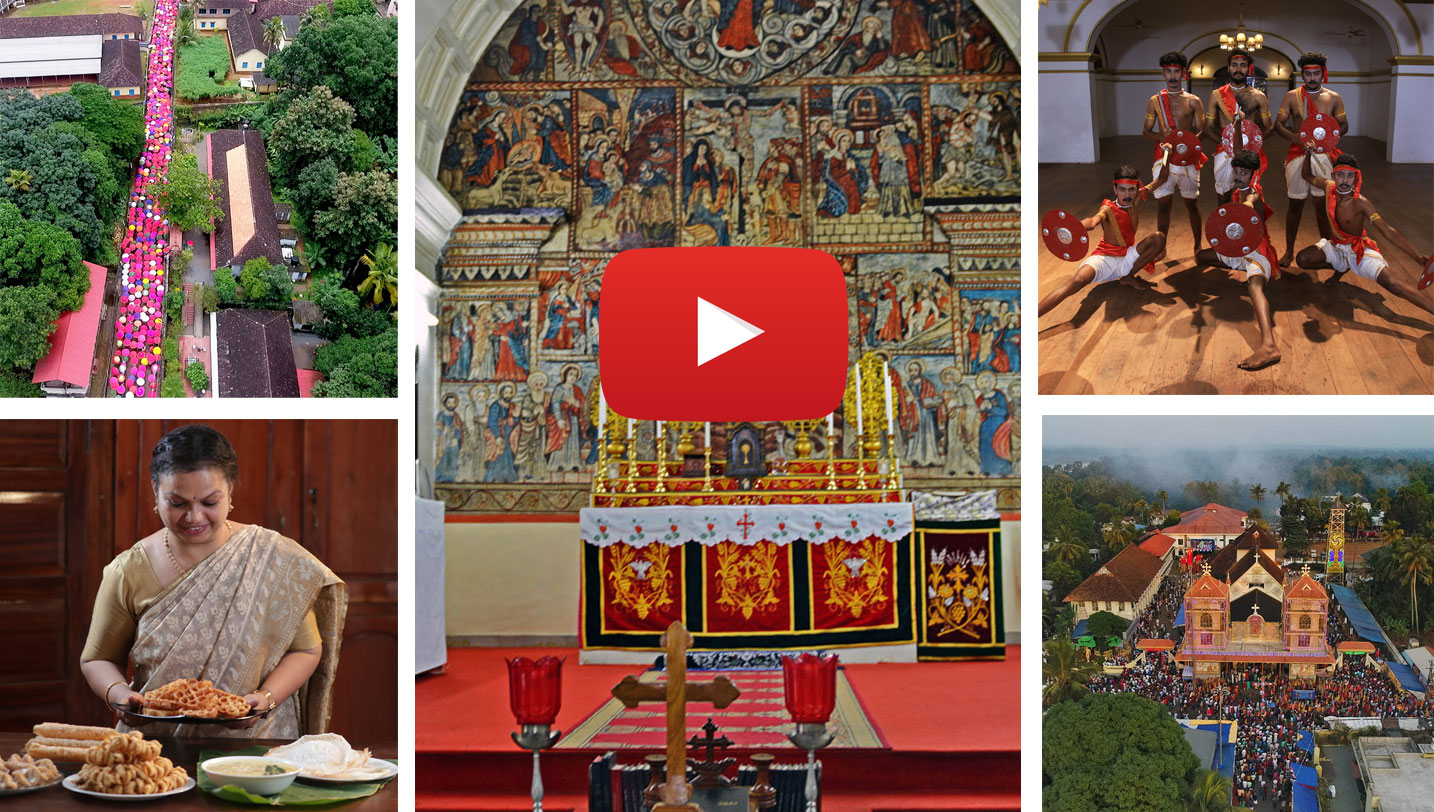Synod of Diamper or Udayamperoor Synod
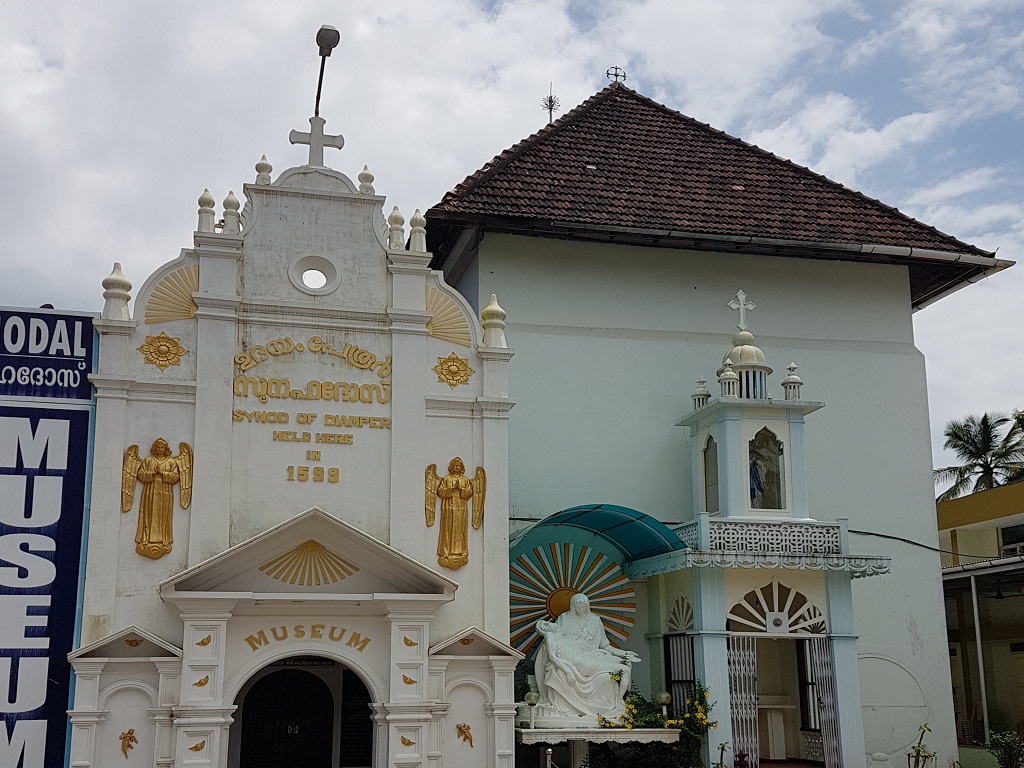
The Greek word Synod means a conference, a group or a congregation of religious leaders for discussing general issues concerning the church. Presently the meaning of Synod is a gathering of Bishops only. The only source for garnering information about the Synod of Diamper is the book, Jornado written by Gouvea and published in Portugal in CE 1606 in Portuguese. This book is a treasure of the history of Kerala and also that of the Christians in Kerala of that period. Dr. Pius Melekandathil translated the book into English. This book which reflects the social milieu of Malabar in the 16th Century was written on Archbishop Alexis Menezes’ reaching Goa after attending the Synod of Diamper. It has the tone and tenor of a travelogue. Gouvea and Menezes were members of the Augustinian Church. The book was written based on the diaries of Menezes and also the narrations of priests who visited Kerala. Throughout the book we have descriptions of the heroic deeds and adventures of Menezes, as well as his services to the King of Portugal and the Pope. The narrations of Francis Ross, Belchoir Bras, and Bras de Santamaria also helped to complete the book.
Preparations for the Synod of Diamper:
The Synod held at the Church named after all the Saints, at Udayamperoor, in 1599, is a landmark in the history of the Christian Churches in India. After the death of Mar Abraham, the last Metropolitan appointed by the Chaldean Patriarch, in 1597, Archdeacon Geevargese took over the reins of the Angamaly Arch Diocese as per its tradition. Archbishop Menezes, started work for merging Angamaly Diocese with the Goa Diocese within the next two years.
The visit of Menezes to Kerala:
Archbishop Menezes reached Kochi in February 1599 with the mission of stopping the use of Syriac and changing the religious rites of the Syrian Christians to that of Latin Rites. A letter written by Menezs to the Patriarch of Jerusalem, who lived in Rome, in 1597, says that he intended to hold a Synod of priests, to bring Syrian Christians under the control of Rome, and persuade them to accept the suzerainty of the Bishop appointed by the Pope, and also to give up Syriac. The Archdeacon opposed the intervention of the Goan Bishop in the internal affairs of the Malankara Church. But he did not oppose his visits to his churches, treating them like that of any other foreign Bishop. A pact was made with Menezes, specifying that he should not exercise his powers during such visits. One of the conditions was that the Archbishop should be escorted by the Archdeacon. Both agreed to summon the Synod immediately.
The Synod of Angamaly held at Udayamperoor:
As per the preference of the Archdeacon, it was decided to conduct the Synod at Angamaly first. But Archbishop Menezes opposed it, as there was little support for him at Angamaly. Menezes selected Udayamperoor where he would have the support of the local rulers, the ruler of Kochi, and of the Portuguese soldiers garrisoned in Kochi. On the other hand at Angamaly, he might have to deal with the resistance of the Christian soldiers and also of the feudal lords of Angamaly who were not favorably disposed to the Portuguese. Menezes issued a circular from Chendamangalam in May 1599 about holding the Synod. The circular said that the Synod was being organized as per the powers delegated to him by Pope Clement VIII and also in his capacity as the Primate of the East. The circular said that the Archdeacons as well as the priests of all the churches and four laymen elected by the general body of each church should attend the Synod. It also stated that those failing to attend the Synod without giving valid reasons would have to face Maharon punishment. The circular also said that Angamaly diocese was orphaned following the demise of Metropolitan Mar Abraham and there was no head of the church or ecclesiastical council to govern the diocese, and the power for governing the Malabar diocese was now vested with the Goa Archbishop. In this context, the circular was being issued by Menezes as the Primate of the East and the Archbishop of all the churches in the country. The circular said that it should be read in all the churches and pasted on their doors for the benefit of the laymen.
On the second day of the Synod, he demanded that all the participants should make a public declaration of their faith. The Archdeacon was the first to deliver it kneeling before the Archbishop. Priests too followed. A priest from Palluruthy read the declaration in Malayalam from the pulpit and others repeated it. It was decided that priests who were absent should do the same or would have to face Maharon punishment.
All the things related to faith, including rites such as baptism, sthairya lepanam, the Holy Communion, thaksa, confession, last rites etc. were discussed at the Synod. The proposal to change the language of Chaldean and Canonical prayers from Syriac to Latin, on the pretext that they contained many blunders, had to be given up due to the resistance of the clergy. However it was resolved to rectify the errors.
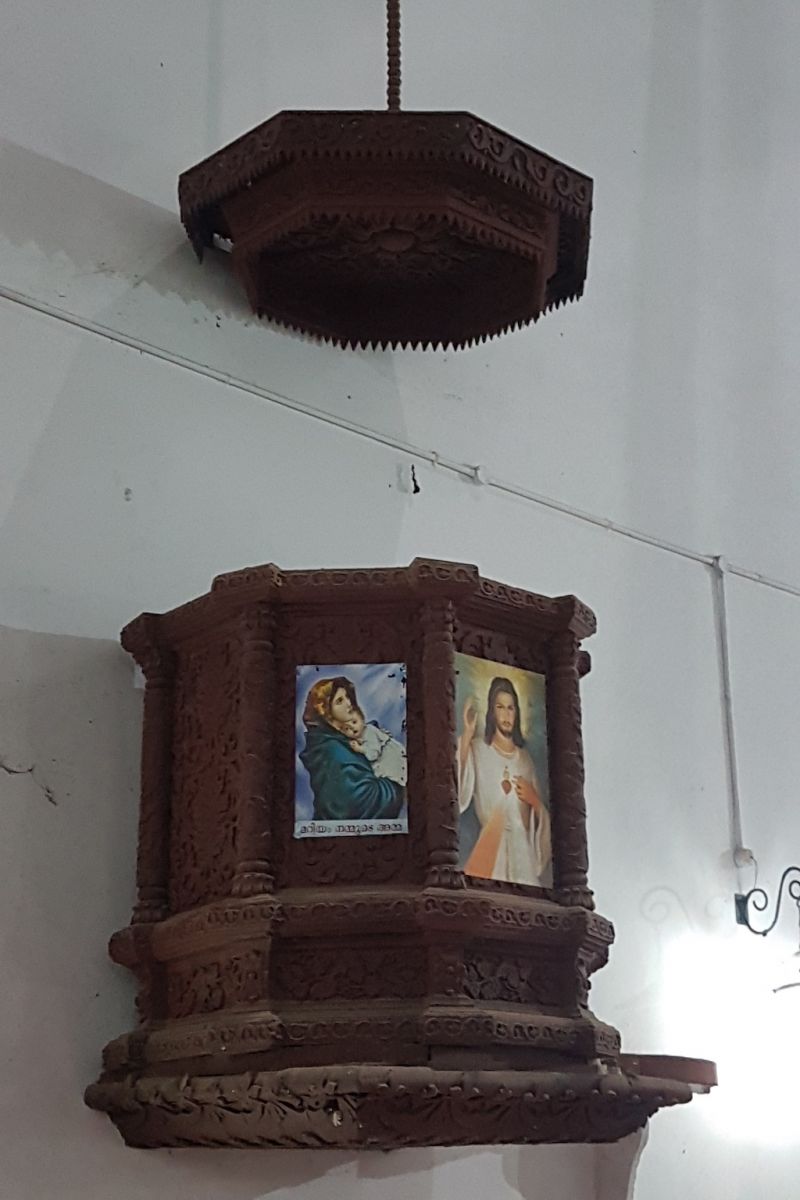
The Synod also discussed transfer of property, untouchability, right to inheritance, ordination, marriage, traditions, style of dressing, celebration of Onam and other Hindu festivals, communal distinctions, and such others and passed 24 decrees dealing with social life.
Two sessions were held every day from the third day onwards. The morning session was from 7 a.m. to 11 a.m. and the second session from 2 p.m. to 6 p.m. Once the Synod was over, Archbishop Menezes signed the document, followed by the Archdeacon, in Malayalam and Karsona. Menezes informed the gathering that one of the copies of the signed document would be conserved at the seminary in Vypin Fort and another one at the Bishop’s House in Angamaly. The Synod concluded with the announcement of the Archdeacon “swathwathodu koode namukku poka.” The participants were presented with a copy of Vedopadesam translated from Latin to Malayalam, a mass slab and containers for storing the holy oil. The Synod decided to bring a Syriac press from Rome and install it at the Vypin fort. This was brought from Rome later by Fr. Leresio. The Synod also decided to give 2,000 Pardao and two barrels of wine for the mass, per year, to each diocese. A Malayalam copy of the Synod’s decisions, which was signed by the Archdeacon and the Rector of Vypin Fort Seminary, Francis Ross, was sent with each of the Vicars to the churches to be read out on Sunday and then kept there.
Imposition of rules:
Though Portuguese historians say that there was freedom of expression for the participants at the Synod, it seems to have been observed more in the breach. There were not much discussions at the Synod. Certain historians allege that priests delegated by the Archbishop alone were permitted to speak at length at the Synod. Francis Ross’s letters to the general of the Church of Jesus confirm this notion. He also points out that after the Synod, Menezes added various canons. The canons written in Portuguese had 30 additional laws that were not there in Malayalam. It was alleged that many laws that were not even read at the Synod were subsequently added and spread across the world. The two copies signed in Malayalam and Karsona, could not be recovered. Though it is said that there was another copy in Angamaly, it too could not be recovered.
The English translation of the canons of the Synod of Diamper was published as “The Act and Decrees of the Synod of Diamper.” Protestant historian Michael Geddes (Chancellor of the Cathedral Church of Sarum) has published a translation from Portuguese to English, titled A short history of the church of Malabar together with the Synod of Malabar in 1964. The library in Vatican holds three copies of the Malayalam Canons. But it could not be confirmed that they were the canons discussed at the Synod. These could have been written in Malayalam following Gouvea’s Jornado. This must be the reason why it is found in some of the copies that the Synod was held at the Martha Mariam Church and not at the All Saints’ Church which was the actual venue. In some of the copies, it is recorded as the Synod of Angamaly, instead of Diamper. As many as 35 canons that are not seen in Malayalam have been found in the Portuguese version.
With the conduct of the Synod, Christians had to give up the teachings of Mar Thoma that they had been following since the origin of Christianity. The system of appointing priests in churches began after the Synod. Till then the high priests used to stay in their homes and performed religious rites. Marriage of priests was banned by the Synod. It also banned Christians from observing Hindu customs and celebrating Hindu festivals like Onam. Till then there was little difference in such things between the Hindus and the Christians.
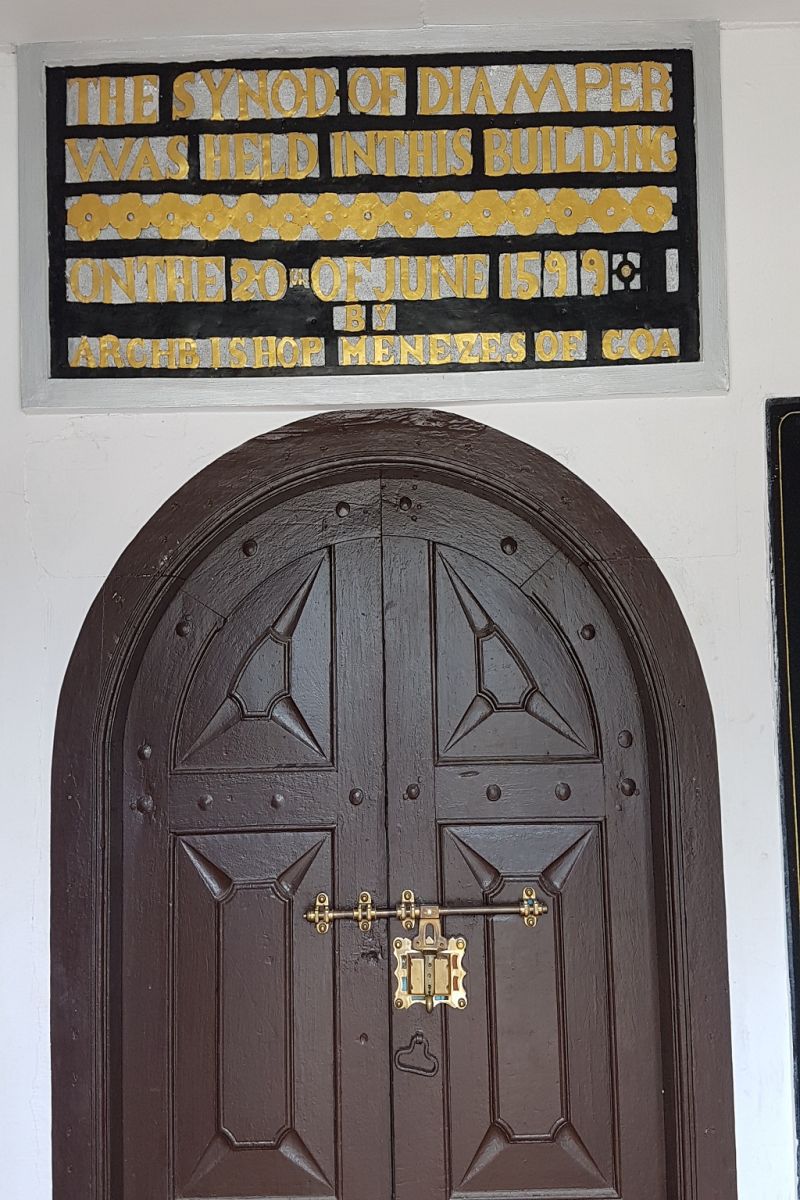
Split in Christian community:
As many as 106 churches took part in the Synod of Diamper in 1599, says the book Jornado. The churches founded by St.Thomas at Nilakkal and Kokkamangalam do not figure in the list of participants. The churches in Thodamala, Vaikkom, Thiruvithamcode, Muhamma, Purakkad, Wadakkancherry, Taliparamba, Kannur, Kozhikode and Vypin Fort got ruined over the years. As many as 19 churches of those days now belong to the Malankara Orthodox church, and nine were divided among Puthan kuttu and Pazhaya kuttu communities. Mathai Kathanar of the Muhamma church was signatory to the memorandum of 1567, dealing with the Meloos Sisma (Thoma, Bernard, Mar Thoma Christians). More than 50% of these churches were in the name of the Holy Mary. The Parappukara Church that claims ancient heritage does not figure in the list of Gouvea. However Parappukara and Parapoor are among those who signed on the Angamaly Padiyola. Both churches are shown as being under the Bishop in the Sisma of 1863.
- The Tradition of St. Thomas
- The arrival of St. Thomas
- Seven and half Churches
- Post St. Thomas arrivals
- The scenario before the arrival of Gama
- Missionary Activities
- Descriptions of St. Thomas Christians
- The Padruodo
- Portuguese Forts
- Synod of Diamper
- Latinization of Churches
- Coonan Cross Oath
- Post Koonan Kurissu
- Establishment of churches
- Starting of Seminaries
- Anglo Indians
- Migrations to Malabar
